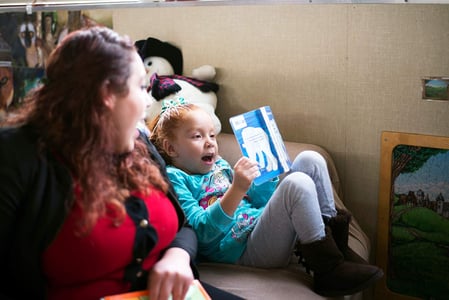
Welcome to our newest blog series dedicated to the research we're reading and thinking about.
As fall breezes sweep in and the smell of freshly sharpened pencils fill the air, we know lots of teachers are making their own new year’s resolutions. After all, when better to reflect on your practice and set new intentions than at the beginning of the academic calendar? Maybe teachers are creating goals that center on social-emotional learning, or they’re recommitting to building strong relationships with their students. Whatever the goal, a 2013 study shows us the value in getting an early start.
Surprisingly, there’s not a ton of empirical evidence to back up the common educator wisdom that building strong relationships with students in the first few weeks will pay dividends when it’s time to hit the academic content. Much of the previous research had looked at overall quality of the classroom environment throughout the year. So, researchers were interested in the effectiveness of a professional development intervention, the Responsive Classroom, which explicitly prepares teachers to foster classroom social supports at the beginning of the school year. The researchers hypothesized that teachers with a strong emotional support at the beginning of the year—as measured by the CLASS—would be able to provide greater instructional support later in the year.
Using a randomized control design, or RCT, researchers examined three specific questions: in this group of 181 3rd- and 4th-grade teachers, are there associations between Emotional Support, Classroom Organization, and Instructional Support over the year? Are these associations different for teachers who implemented the Responsive Classroom with different levels of fidelity? And do these associations differ for experimental and control group teachers, meaning those who laid the groundwork for Emotional Support and Classroom Organization early in the year, and those who proceeded with business as usual?
These mid-career teachers (averaging 10 years of experience) were observed throughout the school year. Those receiving the Responsive Classroom intervention received initial and ongoing professional development. As hypothesized, higher Emotional Support scores at the beginning of the year predicted higher Instructional Support scores later in the year. Interestingly, the opposite was also true—classrooms with greater Instructional Support early on typically showed a more supportive emotional environment as the year went on. However, early-year Classroom Organization didn’t play a significant role in end-of-year Emotional Support or Instructional Support. Teachers who received PD on fostering these initial supports outperformed their control-group peers on Emotional Support and Classroom Organization in the fall, leading to better Instructional Support outcomes later in the year. But regardless of the group to which teachers were assigned, the relationships between emotional and instructional support in the classroom held.
The links between beginning-of-year Emotional Support and later Instructional Support aren’t causal, meaning that we can’t say definitively that this supportive classroom climate is responsible for better instruction. But no matter what goals are set for this school year, this study backs up what the best educators have been saying all along—until students know that you care, they don’t care what you know.
Citation: Curby, T. W., Rimm-Kaufman, S.E., & Abry, T. (2013). Do emotional support and classroom organization earlier in the year set the stage for higher quality instruction? Journal of School Psychology, 51, 557-569.

